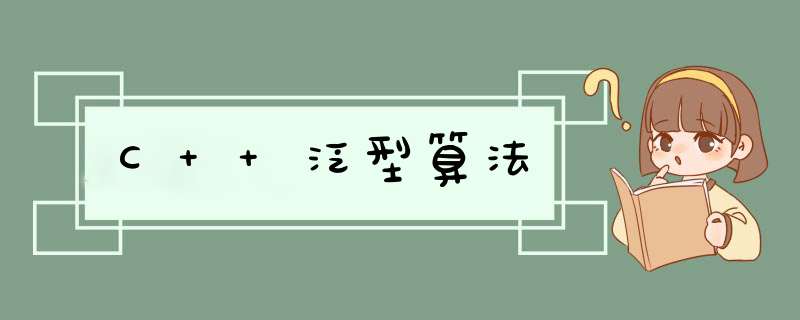
- 泛型算法
- 例1:打印输出
- 泛型算法的分类
- 例2:求和、求积
- 例3:将vector的所有元素设为0
- 例4:transform(),类似于函数映射:y=2x+1
- 例5:排序sort()
- 例6:去除重复值
- 迭代器的分类
- 例7:查找find()
- 例8:复制copy()
- 例9:替换replace()
- 例10:逆转reverse()
- 例子11:`first` 到 `last` 的路程
- 一些特殊的迭代器
泛型算法:可以支持多种类型的算法
这里重点讨论 C++ 标准库中定义的算法
●
#include 结果:
2 0 2 2 0 4 0 1
为什么要引入泛型算法而不采用方法的形式
- 内建数据类型不支持方法
- 计算逻辑存在相似性,避免重复定义
如何实现支持多种类型:使用迭代器作为算法与数据的桥梁
- 泛型算法通常来说都不复杂,但优化足够好
- 一些泛型算法与方法同名,实现功能类似,此时建议调用方法而非算法
std::find V.S. std::map::find
读算法:给定迭代区间,读取其中的元素并进行计算
- accumulate / find / count
#include 结果:
9 8 7 6 5 4 3 2 1
sum:45
product:362880
写算法:向一个迭代区间中写入元素
- 单纯写 *** 作: fill / fill_n
- 读 + 写 *** 作:transform / copy
- 注意:写算法一定要保证目标区间足够大
#include 结果:
0 0 0 0 0 0 0 0 0
#include 结果:
19 17 15 13 11 9 7 5 3
排序算法:改变输入序列中元素的顺序
- sort / unique
#include 结果:
1 2 3 4 5 6 7 8 9
#include 结果:
0 1 2 4
泛型算法使用迭代器实现元素访问
| 迭代器 | 支持 | 典型应用 |
|---|---|---|
| 输入迭代器 (InputIterator) | 可读,可递增 | find 算法 |
| 输出迭代器(OutputIterator) | 可写,可递增 | copy 算法 |
| 前向迭代器(ForwardIterator) | 可读写,可递增 | replace 算法 |
| 双向迭代器(BidirectionalIterator) | 可读写,可递增递减 | reverse 算法 |
| 随机访问迭代器(RandomAccessIterator) | 可读写,可增减一个整数 | sort 算法 |
#include 结果:
x does not contain
#include 结果:
v:
2 0 2 2 0 4 0 1
u:
2 0 2 2 0 4 0 1
#include 结果:
before v:
2 0 2 2 0 4 0 1
after v:
2 8 2 2 8 4 8 1
#include 结果:
before v:
2 0 2 2 0 4 0 1
after v:
1 0 4 0 2 2 0 2
● 一些算法会根据迭代器类型的不同引入相应的优化:如 distance 算法
例子11:first 到 last 的路程
#include 结果:
distance(first, last) = 8
- 插入迭代器: back_insert_iterator / front_insert_iterator / insert_iterator
- 流迭代器: istream_iterator / ostream_iterator
- 反向迭代器:reverse_iterator
- 移动迭代器: move_iterator
参考资料:
《C++ Primer 中文版》(第 5 版)
迭代器库 - cppreference.com
欢迎分享,转载请注明来源:内存溢出

 微信扫一扫
微信扫一扫
 支付宝扫一扫
支付宝扫一扫
评论列表(0条)